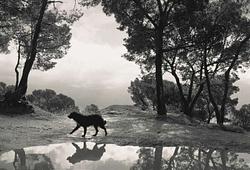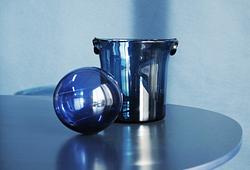Akseli Gallen-Kallela
Akseli Gallen-Kallela, "Aino".
Sign. Oil on canvas 115x115 cm.
Wear due to age and use.
Please note: To submit a bid exceeding 300 000 EUR (3 million SEK), we may require a special approval based on bank reference. Please send an email to validation@bukowskis.com in order to be approved for bidding on this level.
Provenance
Directly from the artist to industrial leader Rudolf Elfving; Clothing retailer Kalle Kuusinen; his estate; present owner.
Exhibitions
"Kuinka monta Keitelettä?" (How many lake Keitele?), Gallen-Kallela museum, 8.2.-11.5.2014.
Literature
Onni Okkonen, "Akseli Gallen-Kallela, Elämä ja taide", WSOY, 1949.
Janne Gallen-Kallela-Sirén, "Minä palaan jalanjäljilleni-Akseli Gallen-Kallelan taide", Otava, 2001.
More information
The Finnish era of Kalevala art is considered to have begun with the triptychs based on the legend of Aino, which Akseli Gallen-Kallela painted in the early phase of his career, at the turn of the 1890s. The most significant of these works he painted in 1891 in Helsinki, after a honeymoon trip to Karelia and Kainuu. The inspiration came from the nature in Karelia and Kainuu, and his own bride was modelling for Aino. Motifs from the Kalevala would become a constant theme throughout his entire career.
Gallen-Kallela painted Aino, now included in Helsinki Winter Sale, by commission of businessman Rudolf Elfving in 1916. It was a reprise of the last scene of the legend depicted in the Aino Myth triptychs, where Väinämöinen loses his reluctant bride forever. Having turned into a fish, Aino is caught by Väinämöinen, but she manages to escape from her elderly suitor and moves away, mocking him. As Gallen-Kallela took on the commission, more than twenty years had passed from finishing the Aino Myth triptychs. While the early versions were painted in the spirit of realism, this time he took a very different approach on Aino.
Gallen-Kallela had started to pursue a more modernistic expression in his art already in the early years of the 20th century. During the years he spent in Africa at the turn of the 1910s, his art was characterised by light and colour and a more expressive method of painting. The strongest colouristic elements faded after his return but left a mark on his artistic production. Similarly, Aino from 1916 is painted with bright colours and strong strokes. The lake view opening out in the background is depicted plain.
This oeuvre represents a contradictory phase in Akseli Gallen-Kallela’s career. After the years spent in Africa, the artist and his family had difficulties adjusting to life in Finland again. While Gallen-Kallela gained plenty of recognition abroad, in Finland he faced sharp criticism from the younger generation of artists. Gallen-Kallela was dejected by this and was possibly already considering emigration to the United States. His studio-home at Tarvaspää was recently completed, but because of the unrest of the First World War, the family moved to the wilderness atelier Kalela. Here Gallen-Kallela felt like he had found peace again. During these quiet years his artistic production mainly comprised commissioned portraits and scenery paintings.
Artist
Akseli Gallen-Kallela is counted among Finland's most famous artists, born in 1865 in Pori. He studied at the Drawing School of the Finnish Art Society in Helsinki and later at the Académie Julian in Paris. He worked across various art forms such as painting, graphics, illustrations, textiles, architecture, and even designed military uniforms. Akseli Gallen-Kallela's first significant work, 'Old Woman with a Cat,' challenged the ideals of its time and paved the way for realism in Finnish painting.
Gallen-Kallela was primarily known for his paintings and illustrations for the Finnish national epic, 'Kalevala.' In 1900, he executed dome paintings with Kalevala motifs for the Finnish pavilion at the World Exhibition in Paris. His visual language is often described as naturalistic, symbolic, and expressionistic
Read more




































